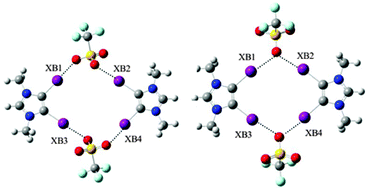Noncovalent interactions in halogenated ionic liquids: theoretical study and crystallographic implications†
Abstract
In recent years, several specific imidazolium-based

* Corresponding authors
a
Key Laboratory for Advanced Materials and Department of Chemistry, East China University of Science and Technology, Shanghai, China
E-mail:
yxlu@ecust.edu.cn
b Drug Discovery and Design Center, Shanghai Institute of Materia Medica, Chinese Academy of Sciences, Shanghai, China
In recent years, several specific imidazolium-based

 Please wait while we load your content...
Something went wrong. Try again?
Please wait while we load your content...
Something went wrong. Try again?
H. Li, Y. Lu, W. Wu, Y. Liu, C. Peng, H. Liu and W. Zhu, Phys. Chem. Chem. Phys., 2013, 15, 4405 DOI: 10.1039/C3CP44649B
To request permission to reproduce material from this article, please go to the Copyright Clearance Center request page.
If you are an author contributing to an RSC publication, you do not need to request permission provided correct acknowledgement is given.
If you are the author of this article, you do not need to request permission to reproduce figures and diagrams provided correct acknowledgement is given. If you want to reproduce the whole article in a third-party publication (excluding your thesis/dissertation for which permission is not required) please go to the Copyright Clearance Center request page.
Read more about how to correctly acknowledge RSC content.
 Fetching data from CrossRef.
Fetching data from CrossRef.
This may take some time to load.
Loading related content
